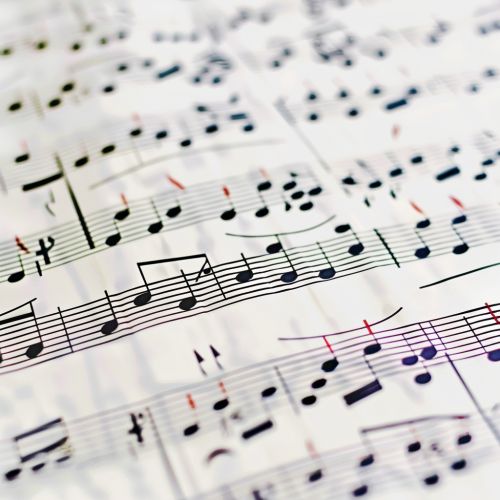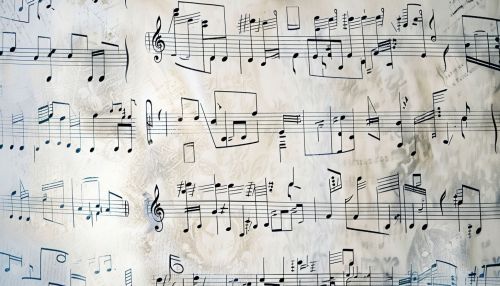Consonance: Difference between revisions
(Created page with "== Definition and Overview == Consonance, in the context of music theory, refers to the combination of tones that are harmonically pleasing and stable. It is the opposite of dissonance, which involves intervals or chords that sound tense and unstable. Consonance is a fundamental concept in Western music, influencing both harmony and melody. == Historical Context == The concept of consonance has evolved over centuries. In Ancient Greece, philosopher...") |
No edit summary |
||
| Line 61: | Line 61: | ||
* [[Tuning systems]] | * [[Tuning systems]] | ||
[[Image:Detail-91655.jpg|thumb|center|Sheet music with various musical notes and symbols.|class=only_on_mobile]] | |||
[[Image:Detail-91656.jpg|thumb|center|Sheet music with various musical notes and symbols.|class=only_on_desktop]] | |||
== Categories == | == Categories == | ||
Latest revision as of 06:41, 20 June 2024
Definition and Overview
Consonance, in the context of music theory, refers to the combination of tones that are harmonically pleasing and stable. It is the opposite of dissonance, which involves intervals or chords that sound tense and unstable. Consonance is a fundamental concept in Western music, influencing both harmony and melody.
Historical Context
The concept of consonance has evolved over centuries. In Ancient Greece, philosophers like Pythagoras explored the mathematical relationships between consonant intervals. The Pythagorean tuning system, based on the ratios of small whole numbers, was an early attempt to define consonance mathematically. During the Medieval and Renaissance periods, the understanding of consonance expanded, incorporating more complex intervals and chords.
Acoustic and Psychoacoustic Foundations
Consonance is deeply rooted in the physical properties of sound waves and human perception. When two or more sound waves with frequencies that are simple ratios of each other (e.g., 2:1 for an octave) are played together, they produce a consonant sound. This is because their waveforms align periodically, creating a sense of harmonic stability.
Psychoacoustics, the study of how humans perceive sound, has shown that consonant intervals are generally perceived as more pleasant than dissonant ones. This perception is influenced by the critical band theory, which describes how the human ear processes frequencies that are close together.
Types of Consonance
Perfect Consonance
Perfect consonance includes intervals that are considered the most harmonically stable. These intervals are:
- Perfect unison (1:1)
- Perfect octave (2:1)
- Perfect fifth (3:2)
- Perfect fourth (4:3)
Imperfect Consonance
Imperfect consonance includes intervals that are still considered stable but less so than perfect consonances. These intervals are:
- Major third (5:4)
- Minor third (6:5)
- Major sixth (5:3)
- Minor sixth (8:5)
Consonance in Different Musical Systems
Western Classical Music
In Western classical music, consonance and dissonance play crucial roles in counterpoint and chord progression. The Common Practice Period (circa 1600-1900) established specific rules for the resolution of dissonance into consonance, creating a sense of tension and release that is central to the musical narrative.
Non-Western Music
Consonance is not exclusive to Western music. Various non-Western musical traditions have their own concepts of consonance and dissonance. For example, in Indian classical music, the Sa-Pa (tonic and perfect fifth) relationship is considered highly consonant. Similarly, Gamelan music from Indonesia uses specific tuning systems that define consonance differently from Western music.
Mathematical Models of Consonance
Several mathematical models have been proposed to quantify consonance. The most notable include:
- Helmholtz's theory: Based on the roughness of sound waves and their interference patterns.
- Plomp-Levelt model: Focuses on the critical bandwidth and the degree of beating between frequencies.
- Harmonic entropy: Measures the complexity of the harmonic series and its alignment with simple ratios.
Consonance in Modern Music Theory
Modern music theory continues to explore and redefine consonance. With the advent of atonal music and serialism, the traditional boundaries between consonance and dissonance have blurred. Composers like Arnold Schoenberg and Alban Berg have challenged the conventional notions of harmonic stability, expanding the expressive possibilities of music.
See Also


